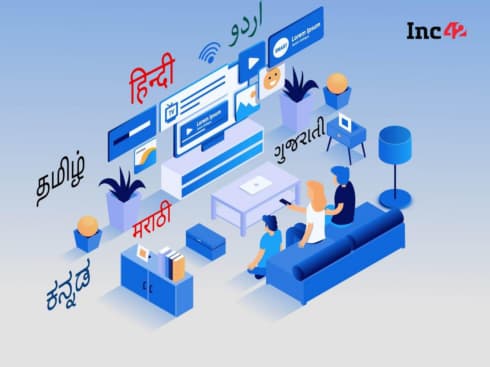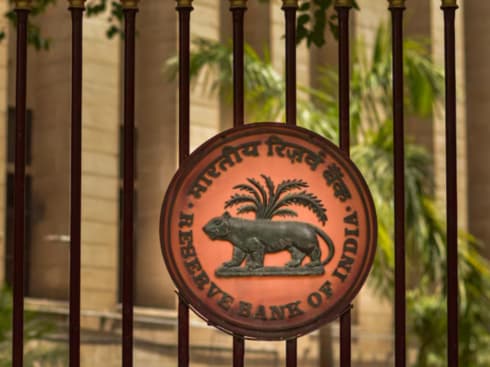The $130 Bn Global P2P Lending Market Bears Striking Parallels With The 2008 US Subprime Crisis
One December morning in 2015, thousands of people took to the streets of China with placards and slogans. Why? They had all gathered in front of the defunct Ezubao headquarters to demand their money back. A week before the protest, the Ding Ning-founded P2P lending company had mysteriously ceased operations. News of Ezubao bilking 900,000 investors out of more than $7.6 Bn surfaced soon afterward. What followed was a country-wide hysteria as part of what is now considered the largest financial scam in Chinese as well as global history.
Globally, the P2P lending market is believed to be worth over $130 Bn (as per October 2016 report by KPMG and the Cambridge Centre for Alternative Finance). Growing at a rate of 51% per annum, the industry will likely reach $290 Bn by 2020, as per a June 2015 report by financial services firm Morgan Stanley. The Chinese market, currently the largest in the world, accounts for nearly $103.43 Bn of the global peer-to-peer lending pie. It is home to more than 4,000 online lending platforms that collectively boast an annual turnover of $3.7 Bn (as of February 2017) and over 3 Mn registered accounts.
Although still relatively young, the Indian P2P lending industry has witnessed a sudden boom, facilitated by the fintech revolution. Expected to hit the $4 Bn-$5 Bn mark by 2023, space features more than 30 players, namely Faircent, LendBox, LenDenClub, IndiaMoneyMart, Monexo, Rupaiya Exchange, LoanBaba, CapZest, and i2iFunding.
However, in an industry that sees transactions worth millions of dollars every day, there is an appalling lack of transparency and regulations. Hidden behind the hypnotising promises of low-interest rates on loans and high returns on investment is a dark, apocalyptic side of peer-to-peer lending. A side that has similar shades to the US subprime crisis of 2007-08
In this article, we at Inc42 have attempted to shed some much-needed light on the risks associated with P2P lending, with a special focus on India. In doing so, we hope to uncover some of the factors that perpetuate scam in the ever-growing world of alternative lending.
Instances Of Scam In P2P Lending
Ezubao’s founder Ding Ning dropped out of high school at 17. After working in his family business and opening his own can opener manufacturing company, Ding’s Ponzi scheme finally began to take shape. He first started alternative banking platform Anhui Yucheng Financial Leasing in 2012, with no banking experience whatsoever. His next company, Ezubao, was founded in July 2014. Using a combination of smooth talking to woo prospective clients with promises of high returns, attractive female staff in swanky offices and even ads on state-run China Central TV helped him gain credibility. Ezubao remained in operation for 18 months.
The amount it swindled from investors? $7.6 Bn. A large portion of which went into luxury Louis Vuitton gifts and exorbitant salaries. CEO and founder Ding Ning, for instance, spent over $20 Mn on a villa in Singapore. Until the authorities cracked down on the operation in December 2015, around $150 Mn had been spent on buying real estate, high-end sports cars, and luxury goods by the founder who was fond of the high life. As per reports by The New York Times, more than 95% of Ezubao’s investment products turned out to be fake.

Image Credit: The Straits Times
Although it has been around since 2007, China’s peer-to-peer industry exploded in 2015. Over the course of six months, the number of P2P lending platforms in the country doubled to around 4,000 in 2016. Currently, the big players in the space include Jimubox, Dianrong, China Rapid Finance, PdDai, Baocaiwang, Yooli, FirstP2P, and Yinker. In the aftermath of the Ezubao scandal, approximately 2,000 of these companies shut down amidst tightening regulations, as per reports by The Epoch Times. Of these, only 200 were expected to pass the regluatory review.
Despite stringent regulations, the US P2P lending sector is not completely immune to criticism either. In April 2016, reports surfaced that Lending Club’s then-CEO Renaud Laplanche had to resign amidst controversies surrounding misdated loans and conflicts of interest. Following the controversy, Lending Club, which was once valued at $8 Bn, also saw a markdown to around $1.7 Bn as per a Financial Times article in May 2016.
Lending Club’s biggest competitor Prosper also came under the spotlight when it sanctioned a $28,000 loan to Syed Farook, the man behind the San Bernardino shooting that killed 14 bystanders and injured 22 other people in December 2015. How Farook managed to qualify for a loan after Prosper’s arduous verification process is another cautionary sidebar in the darker side of the P2P lending industry.
How A P2P Lending Scam Is Perpetrated
Ironically, the very things that attract investors and borrowers to P2P lending are also what adds to its risks and vulnerabilities. In its 18 months of operations, Ezubao lured in more than 900,000 lenders with promises of high yield of around 9% to 14.6% on investments. Because peer-to-peer lending platforms serve only as originators that match borrowers with lenders, they usually rely on bank data for verifying the credit background of both parties.
Although these companies have become more proactive in conducting credit assessment and background checks in recent times, the risk of loan delinquency still exists. To thwart competition, many companies tend to project lower delinquency rates than the actual numbers.
In a bid to artificially build volumes, peer-to-peer lending companies often resort to lax credit standards as well as less thorough verification. In an industry that is expanding by leaps and bounds, thanks to an explosion of Internet-based technologies, the absence of transparency and proper regulations has led to the emergence of a plethora of fraudulent companies. These are some of the biggest risks and challenges associated with P2P lending.

Risk of Default
In countries like India, traditional banking institutions are known to reject the loan requests of borrowers with poor credit scores. Because small businesses in India are mostly service-based, they tend to follow an asset-light business model. In such instances, banks are usually reluctant to lend money to SMEs, especially those operating for less than a year. High-risk businesses, such as trading firms, also bear the brunt of the banks’ rigid laws.
P2P lending, typically, comes to the rescue in these cases. Because it is mostly availed by individuals and businesses with less-than-stellar credit scores, it usually has a higher risk of a scam than conventional financial institutions. In the UK, Quakle ceased operations in 2011, as a result of a near-100% default rate.
Between 2006 and 2008, around 36.1% of US-based Prosper’s total loans defaulted. Lending Club, the largest P2P lending player in the US, has a default rate of around 9.8% on high-risk investments, according to a report by Forbes. US-based CircleBack Lending reported losses of more than $126 Mn in 2015, according to financial services firm Morgan Stanley.
In this aspect, we can find striking parallels between P2P lending and the real estate housing crisis of the mid-2000s. During 2007-08, reckless high-risk mortgage lending in the United States turned the country’s billion-dollar valued stocks and bonds worthless. Subprime mortgages grew from 5% ($35 Bn) in 1994 to more than 20% ($600 Bn) in 2006. When the bubble finally burst in 2007, loan defaults and delinquencies soared to over 25%, leading to the collapse of banks such as Lehman Brothers and Bear Stearns.
Lack Of Due Diligence
At present, the entire umbrella of responsibilities, including credit assessment and due diligence, falls on the shoulders of P2P lending companies. Since these platforms function independent of traditional banking institutions, it exposes lenders and borrowers to a wider range of risks and vulnerabilities. This inadvertently brings into question the expertise and reliability of these platforms, especially when it comes to evaluating credit-worthiness and propensity of loan defaults.
As intermediaries, P2P lending portals do not have access to the resources that banks usually have at their disposal. In general, banks have an extensive database of borrowers’ savings and credit history. Something that social lending platforms normally do not have access to. Instead, these lending companies in India rely on credit information companies (CIC) – such as TransUnion Credit Information Bureau Ltd. (CIBIL), Experian India and Equifax India – for background and credit checking purposes. Lack of verifiable data about investors and loan seekers, such as employment status, income, a company’s debt-to-equity ratio, etc. continues to handicap this fast-growing domain.
Obscure Methodology
Despite their peripheral status as intermediaries, online platforms have an important role to play in mitigating the risks of scam associated with P2P lending. The other way also holds true. The risk of loan delinquency (defaulting) depends greatly on what the peer-to-peer lending company has set out to achieve. Transparency about its methodology is key to ensuring the security of investors. Here, methodology refers to how the platform actually assesses the creditworthiness of individuals and businesses; what measures does it have in place to prevent loan defaults, what steps does it take to aid loan recovery, how well it integrates customer feedback for improvements etc.
The P2P lending company’s long-term vision is another important aspect that should be considered when evaluating the viability of its business model. They are essentially for-profit organisations looking to generate revenue from lenders and borrowers’ origination fees. In a race to overtake the competition, companies have, in the past, resorted to fraudulent means.
Let’s take the Ezubao example again. The senior management, including founder Ding Ning, reportedly squandered $7.6 Bn on gifts, luxury items, cars and salaries during the company’s 18 months of operations. The opacity that usually surrounds peer-to-peer lending companies, especially pertaining to methodology and long-term vision, is something that lenders and borrowers should be wary of.
Lack of Transparency
All the above factors bring us to the general lack of transparency that continues to plague the P2P lending market, more than 10 years after the world’s first peer-to-peer lending platform Zopa cropped up in the UK. When lending capital to businesses, the only information usually available to investors is the industry the businesses belong to. The name and other details of the business often remain undisclosed.
In large-ticket investments, lenders should be able to do their own due diligence as a way of determining the viability of the investment. Scant information about borrowers is another major issue that deters large institutional investors from participating in peer-to-peer lending.
During the financial crisis of 2007-08, subprime lending was often supported by very little verifiable documentation and credit checks. The originators of the subprime mortgages served only intermediaries that, like the P2P lending platforms, did not have any “skin in the game”. Lenders, on the other hand, had to rely on third-party credit ratings and assessment that were at times unreliable. The lack of transparency was actually one of the major contributing factors behind the housing market scam in 2008.
The Risk Of Unsecured Loans
Because P2P lending deals primarily with small-ticket-size unsecured loans, the chances of delinquency are invariably higher than conventional lending activities. The average ticket size of peer-to-peer investments in India ranges between $2,330 (INR 1.5 Lakhs) and $3,107 (INR 2 Lakhs). The interest rates on personal loans vary greatly, depending on lender preference and the borrower’s credit score. Since interest rates are not fixed, they can be below 10% but, at times, can also reach 30%-40%. Origination fees also differ from one platform to another.
According to a Reuters 2015 report, unsecured personal loans constitute 4% of all loans in India. In March 2016 alone, $47.4 Bn (INR 2,96,800 Cr) was issued as personal loans to the country’s 1.31 Bn population. The rise in demand for unsecured loans has prompted many private-sector banks like HSBC and Axis Bank to expand their portfolio of small-ticket personal loans. Despite increased demand, however, widespread loan defaults have caused HSBC’s Pragati Finance, Standard Chartered’s Prime Financial, Citigroup’s Citifinancial, and Temasek’s Fullerton to incur heavy losses in the past.
Insurance Against Loan Defaults
Given that alternative lending practices, like P2P lending, do not fall under the purview of the traditional banking system, loans are usually not backed by any kind of insurance or guarantee.
Under the Deposit Insurance and Credit Guarantee Corporation (DICGC) – a subsidiary of the Reserve bank of India (RBI) – banks currently provide insurance for secured investments of up to INR 1 Lakh.
In countries like China, the UK, and the US, peer-to-peer lending platforms already have a loan guarantee plan in place for lenders. LuFax, China’s largest P2P lending company, offers partial insurance to protect the investor’s money, in case of a default. Because the social lending industry is still relatively young in India, it is presently not supported by a robust credit guarantee system.
As per new reports, the RBI might, in fact, be averse to the idea of P2P lending platforms offering a first loan default guarantee (FLDG) to institutional lenders. Under the FLDG security cover, which is currently available to NBFCs, lenders can ask for collaterals as a way of safeguarding their money.

Cybersecurity Is A Rising Threat
One of the reasons the RBI is looking to regulate the peer-to-peer lending industry in India is to mitigate the risk of cyber breaches. With the rise of fintech, more and more transactions are occurring online. In most cases, fledgeling P2P lending platforms do not have sufficient resources to ensure the security of customer information against hackers. Outlining the cybersecurity risks associated with Internet-based lending, the RBI stated in a 2016 consultation paper:
“It can cause significant disruptions in the services of these fintech ventures apart from risks related to sensitive customer information and cyber frauds.”
Globally, one of the biggest ransomware attacks in 2017 was WannaCry (in May). For the uninitiated, WannaCry is a crypto-worm that infected up to 300,000 computers running Microsoft Windows encrypted data, and even locked users out. Among those targeted were Britain’s National Health Service, Germany’s federal railway system, Russia’s Interior Ministry, Japan’s police network, Chinese government-run department, FedEx, automobile manufacturer Renault and many others.
The Absence of A Proper Loan Recovery System
In addition to overseeing payments and fund transfers from borrower’s bank account to the investor and vice versa, P2P lending platforms often provide on-time loan recovery services in exchange for a fee. This is usually done through specially-appointed recovery agents. The process of loan recovery can prove especially challenging for alternative lending companies that lack the resources conventional financial institutions have.
At times, even large banks find it difficult to recover capital lent to individuals as well as businesses. According to a report by the RBI, out of $35.4 Bn (INR 2,21,400 Cr) worth of NPAs, only around $3.6 Bn (INR 22,800 Cr) has been recovered during the fiscal year ending in March 2016. This amounts to a recovery rate of less than 10.3%. Compared to that, the recovery rate of non-performing assets was more than 22% in March 2013.
The Risks And Challenges Unique To India
According to a report by The Boston Consultancy Group (BCG), the Indian banking system is slated to become the third-largest in the entire world by 2025. Under the Pradhan Mantri Jan Dhan Yojana (PMJDY), more than 225 Mn previously-unbanked people from around the country were offered access to bank accounts by November 2016. In recent times, the launch of India’s digital stack – Aadhaar, eKYC and digital payment services (including UPI and BHIM) – has paved the way for a fintech reformation that challenges the long-standing monopoly of traditional banking institutions.
Although it has been around for the last five years, the country’s peer-to-peer lending industry catapulted to the forefront post-demonetisation. Because it is largely unregulated, the market is currently marred by a myriad of risks and challenges, chief among which is the dearth of verifiable data.
In a country with a population of over 1.31 Bn, only 220 Mn people have PAN cards. Other forms of KYC (know your customer), including voter ID, Aadhaar and ration cards are not considered as the sole identity proof, especially when it comes to financial activities. This makes the process of borrower’s credit assessment and background verification difficult and unreliable. Commenting on the problems unique to the Indian context, OpenTap co-founder and CEO Senthil Natarajan told Inc42:
“The main difference between P2P in India and other countries is that we’re latecomers to the party. P2P lending is still in the nascent stages when compared to many other economies of our size. What may be revolutionary here could well be basic in other parts of the world. Compared to advanced economies, digital penetration is also lower in India.”
According to Natarajan, technology can’t be a big leverage in the Indian market. Consequently, we need to adopt a few different approaches to reach all segments of the population. At the same time, awareness in the community about alternative investments is still relatively low. This, in turn, presents a challenge in getting lenders/investors on board. Lack of awareness translates to lack of trust among borrowers, which is also one of the reasons why P2P lending has not yet gained traction in the Indian market.
In India, the emerging wave of alternative lending is being steered by a class of young entrepreneurs and technocrats, with no prior experience in banking or finance. To that end, the RBI has suggested including a reasonable percentage of Board members with an extensive background in finance.
Scams in the banking sector are not uncommon in India. In the past, we witnessed the fall of Secunderabad-headquartered Global Trust Bank (GTB), when founder Ramesh Gelli was found embroiled in the 2001 Ketan Parekh stock market manipulation scam.
Others include the Harshad Mehta scam that made headlines in the early 1990s, the Roop Bhansali investment banking scam, the South Indian co-operative bank scam that surfaced in 2004, and the more recent Sahara India Pariwar scam, in which Chairman Subrata Roy was found to be involved in an investor fraud case. The Saradha Group chit-fund scam is another reminder of the devastating consequences that financial scandals can cause in India.
How The RBI Plans To Mitigate P2P Lending Risks
The Reserve Bank of India has long been petitioning to instate regulations for P2P lending. In a 2016 consultation paper, the country’s central banking institution raised concerns regarding the lack of transparency of KYC and loan recovery practices, which could inadvertently increase the risk of a scam. Since the transactions are all carried out through bank accounts, all KYC-related activities should be conducted by the concerned banks, RBI argued. The paper reads:
“RBI has powers to regulate entities which are in the form of companies or cooperative societies. However, if the P2P platforms are run by individuals, proprietorship, partnership or Limited Liability Partnerships, it would not fall under the purview of RBI. Hence, it is essential that P2P platforms adopt a company structure. The notification can, therefore, specify that no entity other than a company can undertake this activity. This will render such services provided under any other organisational structure illegal. Alternatively, the other forms of structure may be regulated by the State Governments.”
As per recent reports, the RBI norms have already been finalised and will likely be released before July-end 2017. Up until now, P2P fintech companies were registered under The Companies Act. The new Finance Ministry guidelines, however, recognise these institutions as Non-Banking Financial Companies (NBFCs). Commenting on the impact the RBI regulations will have on the country’s peer-to-peer lending sector, Rupaiya Exchange founder Rohan Hazrati told Inc42:
“Providing and proving trust will be the foremost challenge for any platform. Stringent diligence would be required for all borrowers before any profile is made live on the platform. Once the regulation is implemented, we are hopeful that we would also have access to the credit bureau hence the loans offered by P2P shall also be reported to them. However, that being said, one would have to realise that the risk adjusted rate of returns offered by P2P lending is very high and, hence, some amount of risk would have to be taken up by the lenders in order to earn such kind of returns.”
Editor’s Note
While we have been comparing the US housing bubble and economic collapse to the darker side of P2P lending, it is ironical that P2P lending rose from the ashes of said bubble. With the fall of traditional lending institutions such as Lehman Brothers and Bear Stearns amidst the subprime mortgage crisis in the US, alternative lending practices emerged as viable models that promised low-interest rates for borrowers and high returns for lenders. Fast forward 10 years and the world’s peer-to-peer lending industry seems to bear startling parallels with the housing bubble that went up in flames, reportedly taking with it $15 Tn in losses.
Although much smaller in scale than the real estate bubble of 2007-08, the unregulated P2P lending market poses a similar financial problem, as can be seen in the case of the Ezubao scam. Poised to grow into a $290 Bn sector by the end of 2020, the space needs proper risk management and regulations to prevent a scam akin to the housing collapse a decade earlier. In India, especially, the peer-to-peer lending domain is largely unexplored. Lack of proper infrastructure, resources and transparency are some of the major challenges that are currently crippling this fast-growing industry.
In an interaction with Inc42, OpenTap co-founder and CEO Senthil Natarajan said, “We certainly hope that the RBI guidelines on P2P will positively impact the industry, as some amount of regulation will clean up slack in the system, ensure that stringent anti-money laundering laws are in place and make it easier for capital to find its way in.”
In a $130 Bn industry, the $7.6 Bn Ezubao scam just goes to show the extent of havoc that fraudulent schemes can perpetrate. To prevent another crisis on the scale of the 2008 real estate collapse, the global P2P lending market needs to instate proper regulations and guidelines aimed at enhancing transparency and reliability.
Update 1: Friday, July 28, 2017:
We have updated a section about ‘Lending Club’ in this article. It was earlier mentioned that Lending Club’s then-CEO Renaud Laplanche made alterations in loan application documents in order to hasten the transaction process. This information was incorrect and we apologise to our readers for the same.
Update 2: Friday, July 28, 2017:
We have updated a section under the sub-head, “The Risk Of Unsecured Loans.”. The facts used in the subhead date back to 2015 and 2016, hence cannot be termed as recent. We have now updated it as the “developments in the past”. Also, the original source links to all the information used in the article have been added.
This article is part of a series dedicated to the analysis of the P2P lending landscape in India and the rest of the world. In the next article, we will take a look at the investors that are bullish on the Indian P2P lending sector. We will also delve deeper into the country’s P2P lending industry, focussing on the plethora of startups that have cropped up in recent years.
































 Ad-lite browsing experience
Ad-lite browsing experience